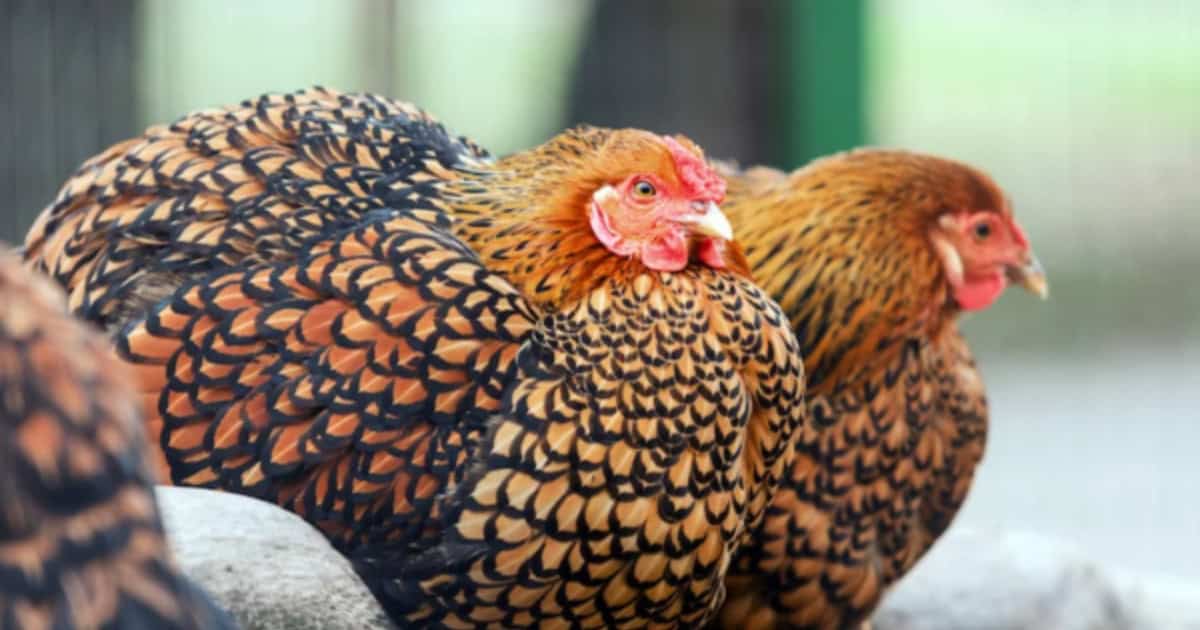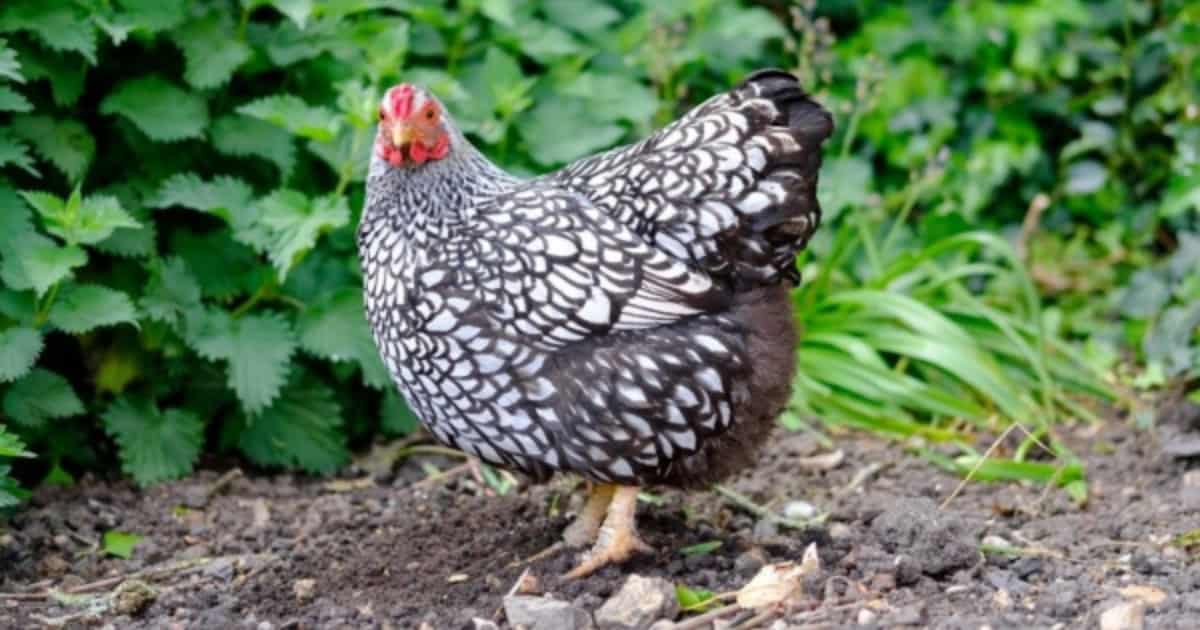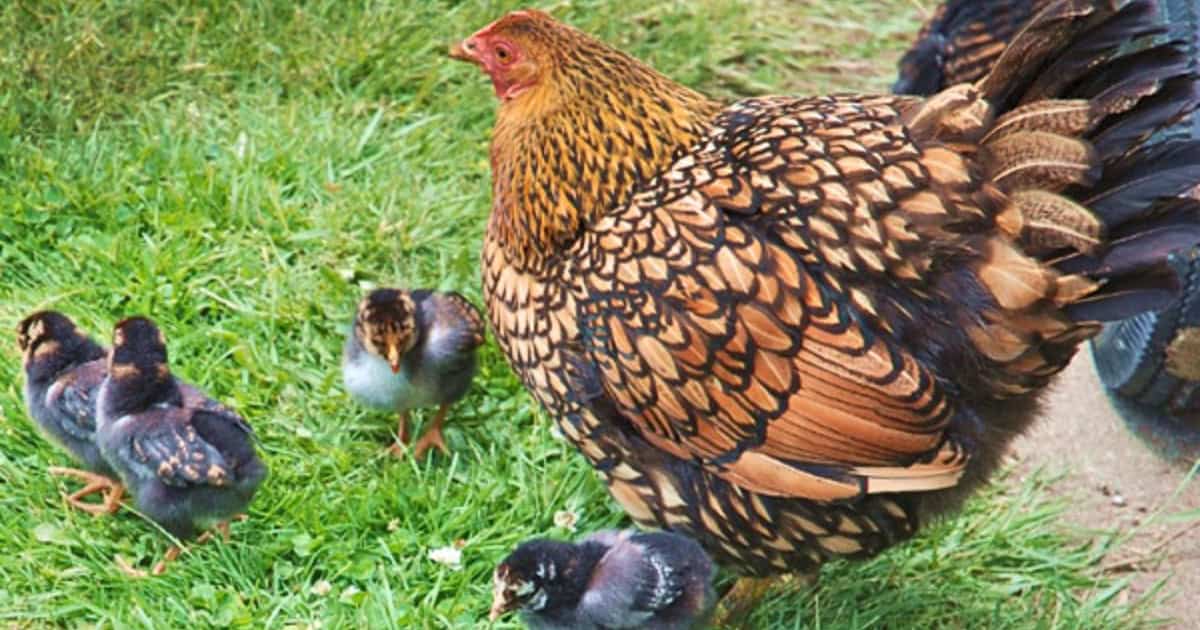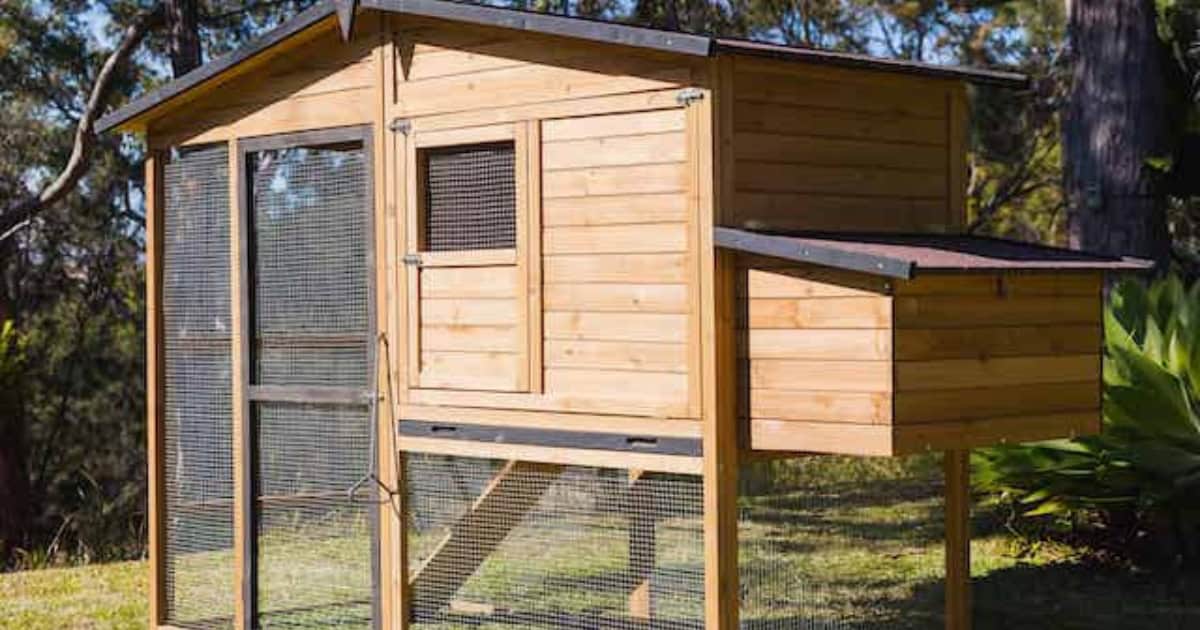Chickens, Info Guides
Wyandotte Chickens – A Guide to the Friendly Chicken Breed
Wyandottes make a great backyard chicken. They are friendly without being overly docile meaning they have plenty of personality.
They are easy to handle, care for and are cold hardy.
They are a dual purpose breed with good egg production that love to free range.
Wyandotte chickens come in a wide variety of feather colours and patterns that really make them stand out in your flock!
The most popular and recognisable is the Silver Laced Wyandotte followed by the Gold Laced Wyandotte.
Find out everything you need to know about the Wyandotte in our blog below:
Wyandotte Chicken Breed Profile
The first Wyandotte breed was developed in the late 1800’s in upstate New York, USA.
These birds were developed to be a dual purpose chicken breed. This means they are suitable for both egg production (as they are good layers) and meat production (as they have a heavy weight).
They were the first dual purpose American breed of chicken.
The Silver Laced Wyandotte was the first variety created. They were originally called an American Sebright.
Not long after, the Gold Laced Wyandotte (aka. Golden Laced) was created in Wisconsin, USA.
They were made by crossing Silver Laced Wyandottes with a golden spangled Hamburg and partridge Cochin. They were originally called a Winnebago.
Later on other colours were developed and a smaller bantam Wyandotte was created.
The breed’s name was later changed to ‘Wyandotte’ in honour of the Wyandotte Indian Nation from the upstate New York area.
Standard sized Wyandottes were first recognised by the American Poultry Association in 1883. Bantam sized Wyandottes were recognised much later in 1933.
In modern times, Wyandottes are a popular show breed. Both standard and bantam varieties are commonly found as backyard pets.
Appearance
Wyandottes have a broad, round body with a large head.
Their legs are yellow, featherless and strong enough to support their heavy bird frame. They have four toes on each foot.
They have red wattles, comb and earlobes. Their beak is dark yellow, their skin is yellow and their eyes are orange.
The breed has a rose comb which is flat, small and close to the chicken’s head. It has lots of little spikes all over. A rose comb is suitable for colder climates as the comb is less likely to be affected by frostbite.

Wyandotte Chicken Appearance
Wyandotte chickens have a large body with large range of feather colours
Size
Wyandotte chickens are a moderately sized bird, making them a suitable breed to farm for their meat.
A standard hen weighs around 2.7kg. A standard rooster could weigh up to 3.8kg.
Wyandottes also come in a smaller, bantam variety. They are rarer than the standard Wyandotte breed. An average bantam hen’s weight is around 1kg and a bantam rooster around 1.5kg.
Feather Colours
Wyandotte feathers come in a wide range of colours and patterns. There are 17 known varieties. Eight of these are officially recognised by the American Poultry Association. They are:
- Silver Laced Wyandotte – The Silver Laced Wyandotte is the original and most common variety. They have light grey feathers with a black edging.
- Gold Laced Wyandotte (aka. Golden Laced) – The Gold Laced Wyandotte is the second variety created and also the second most popular found today. They have golden feathers with a black edging.
- Silver Penciled Wyandotte – The Silver Penciled Wyandotte has light grey feathers with black lines throughout.
- Black Wyandotte – The Black Wyandotte is a dark, black blue colour.
- White Wyandotte – The White Wyandotte is pure white.
- Buff Wyandotte – The Buff Wyandotte is a yellow/light beige colour.
- Partridge Wyandotte – The Partridge Wyandotte has orange feathers with black markings all over.
- Columbian Wyandotte – The Columbian Wyandotte has white feathers with some grey or black markings on their neck and tail.
Other colours that may be commonly found but are not officially recognised by the American Poultry Association include: Blue Laced, Blue Laced Red, Splash Blue Laced, Buff Laced, Splash Laced Red and Lavender.
Laced bird feathers have a different colour around the edge of the feather.
Penciled bird feathers have very fine lines of a different colour that follow the contour of the feather, making a detailed and striking pattern.
Eggs
Wyandottes are decent egg layers. Whilst not laying as many as the Australorp or Rhode Island Red breeds, they are very reliable layers and a great addition to your backyard flock.
Egg Colour and Size
Wyandotte hens lay large eggs. They are often brown in colour.
The colour of an egg is determined by the breed of chicken, not by the colour of their feathers. So even if they are darker or lighter in colour, all Wyandotte hens lay brown eggs.

Wyandotte Chicken Eggs
Wyandotte chicken eggs are large in size and are normally a light cream or brown shade
Egg Laying
Wyandotte hens lay roughly 200 eggs per year. This is around 4 eggs per week per hen!
Wyandottes typically begin laying when they are between 6 and 8 months old. This is later than many other breeds but typical of a bird their size.
Unlike many other birds, Wyandottes often continue to lay their eggs during the winter months. However, egg production may slow down compared to summer.
Like all chicken breeds, they will stop laying when they are moulting. This is usually for 6 to 12 weeks every autumn.
During this time, chickens are using all their nutrients to replenish their feathers and are unable to also produce eggs.
Wyandotte Chicken Breed as Pets
Backyard chicken keepers agree that the Wyandotte chicken breed makes a great backyard pet! They are easy to care for and therefore are beginner friendly.
Wyandottes are a very cold hardy breed. Their thick plumage keeps them nice and warm, meaning you don’t need to worry about them if the temperature gets too cold.
On the other hand, they don’t handle the heat very well so are not suited to hot climates.
On a very hot day you can help keep your Wyandottes cool by making sure they have lots of shade and drinking water, hosing their coop down and providing frozen containers of ice for them to sit near.
Wyandotte chickens are quite noisy compared to other breeds. To avoid annoying your neighbours, keep their coop far away from the fence line.
They are a hardy breed and rarely have any health problems. They have dense feathers so will need to be checked for mites and other parasites regularly.
Keep an eye on your flock to make sure they are in good health and happy. If you suspect one of your girls may be unwell, take them to a vet to be checked properly.
The life expectancy of pet Wyandotte chickens is around 8 years.
Temperament
Wyandotte chickens have a calm and friendly demeanor. This makes them suitable for a family with children and to enter show competitions.
However, don’t think that ‘calm’ means they are boring or docile!
Wyandottes are fun and talkative. They like interacting with humans and enjoy a bit of attention.
They are not lap chickens but are happy to be handled when needed.
Despite being friendly, they can be very bossy chickens.
When mixed in with other breeds, they will usually be high up on the pecking order and tend to hang around with other Wyandottes.
Be careful who you mix them in with as they may bully younger birds or more docile breeds.

Wyandotte Chicken Temperament
This chicken breed are often very calm and friendly in nature
Caring for your Wyandotte Chickens
Provide your Wyandottes with fresh food and water every day. You can occasionally feed them treats such as vegetable scraps, dried meal worms or canned corn.
You will need to clean out the coop and replace all bedding whenever it starts to smell bad. This is usually once per week but depends on the size of the coop and how many chickens you have.
Choose a disposable and absorbent bedding material. Popular options include wood shavings, shredded paper or sugar cane mulch.
If you let your Wyandottes out to roam in your yard during the day, make sure that they are all tucked up safe and sound in their coop each night. Latch the door securely to prevent predators gaining access.
Breeding Wyandotte Chickens
Wyandottes are very likely to go broody. This makes them a useful hen to hatch fertile eggs.
Chicks should hatch after an average of 21 days.
They make great mother hens and have natural mothering instincts. They can be very protective.
If you aren’t trying to hatch eggs then a broody chicken can be a nuisance. To discourage this behaviour, remove eggs from their chicken coop daily.

Breeding Wyandotte Chickens
Most Wyandotte’s chickens are likely to go broody making them useful to hatch fertile eggs.
Roosters vs Hens
Most Wyandotte chicken keepers only keep hens. This is partly because of their egg laying ability and partly because of their temperament.
In general, hens are easier to handle and care for. They are friendlier and more tolerant of being near people.
You do not need to have a rooster as part of your backyard flock. Some people believe hens are happier with at least one rooster around but you need to consider if you will be able to look after a rooster properly.
Wyandotte roosters are prone to being aggressive. This doesn’t mean they all are but many are to the point where it makes them difficult to approach and handle.
They are likely to become even more protective and agitated during breeding season.
Roosters will crow loudly, especially in the early morning, which may annoy you or your neighbours.
Some will grow sharp spurs on their feet which can injure you or your hens.
If you are considering adding a Wyandotte rooster to your flock, we recommend you contact your local council first. Many councils don’t allow backyard chicken owners to keep roosters or they have strict rules in place for ownership.
Chicken Coops
Like many chicken breeds, the Wyandotte can handle being confined but is much happier when they are allowed to free range every day.
While it is ideal to let them free range all day, even letting them out for an hour or so each afternoon will make them much happier.
Their favourite activity is scratching around in the yard and digging up seeds and bugs. This is a very natural behaviour and a healthy way to supplement their diet.
Search for a chicken coop made from high quality, rot resistant timber and with a waterproof asphalt roof.
The Somerzby Estate Chicken Coop shown below is perfectly suited for Wyandotte chickens and can house up-to 8.
Estate Chicken Coop
The Somerzby Estate is the ultimate luxury accommodation for your chooks featuring a strong build and a pullout tray for easy cleaning
The size you need will depend on how many chickens you have. Make sure there is enough room on the perches inside so they all have somewhere to roost at night time.
It will be much easier to clean out your chickens’ coop if it has large opening doors and a slide out metal tray.
Protect your flock by choosing an enclosure with strong wire mesh on the sides that a predator could not break through.
Adding in either a wire mesh floor or a wire mesh skirting around the outside of the coop will prevent foxes and rats from being able to dig in.
Nesting Box
Choose a chicken coop which includes nesting boxes. A Wyandotte hen will naturally prefer to lay her eggs inside a nesting box as it helps her feel protected.
Nesting boxes benefit you as a chicken keeper too! You always know where the eggs are and don’t have to search your whole yard trying to find them. This also decreases the chance of eggs being stepped on or broken.
Choose a chicken coop with nesting boxes built onto the side with an opening lid. This will make collecting eggs much easier as you don’t need to go inside it to collect them.
On average, you will need one nesting space for every three Wyandotte birds. They will be happy to take turns and share nesting boxes plus they won’t all lay their eggs at the exact same time.
Buying
Once you have decided you would like to welcome the Wyandotte chicken breed into your family, you will need to think about what age you want to start at.
Most people buy point of lay chickens. This means they are at the age where they are about to start laying their eggs (around 6 months old). Point of lay Wyandotte chickens typically cost $15-40 each.
A day old Wyandotte chick will cost around $10. While many sellers will sex the chicks, there is always a risk you may end up with some unwanted roosters.
You will need a heating source to keep each chick constantly warm at 33 degrees. You will also need to keep them separate from adult chickens as they may injure the chicks.
Buying fertile chicken eggs is the cheapest way to buy a Wyandotte, at around $12-24 per dozen.
Hatching eggs can be an exciting and fun way for families or schools to teach children where chickens come from.
However, it is a lot more work and isn’t guaranteed that all of the eggs will hatch. You will need to have a good broody Wyandotte chicken or an incubator to hatch them.
Please note poultry prices will vary a lot based on location, the time of year, demand and availability of birds.
If a certain coloured Wyandotte variety is in higher demand or is rarer, it may cost more.
Wyandotte chickens can be purchased from professional or backyard poultry breeders. Some breeders (see our “where to buy chickens” page) are able to transport the birds to you for an extra fee.
Many local farm supply or feed stores will also sell poultry.





